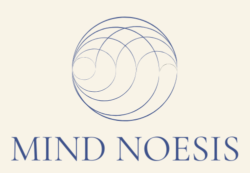Stoicism, an ancient philosophy that originated in Greece around 300 BCE, has seen a resurgence in modern times. Known for its focus on cultivating inner peace, resilience, and clarity, Stoicism shares profound connections with mindfulness and meditation practices. Both approaches aim to help us navigate life’s challenges with grace, awareness, and balance, making them powerful tools for self-development.
By exploring the principles of Stoicism and their relationship to meditation and mindfulness, we can uncover practical ways to live a life of purpose and tranquility.
The Core Principles of Stoicism
At its heart, Stoicism teaches us to focus on what we can control and let go of what we cannot. This fundamental idea helps create emotional resilience and a sense of peace. Here are the key tenets:
1. Control and Acceptance
Stoics believe that while we cannot control external events, we can control how we respond to them. By accepting what is beyond our influence, we conserve energy for meaningful action.
2. Living with Virtue
For the Stoics, living virtuously, and practicing wisdom, courage, justice, and temperance, is the ultimate path to fulfillment. Actions aligned with these values bring a deeper sense of purpose.
3. Impermanence and Perspective
The Stoics often reflected on mortality and the fleeting nature of life. Far from being morbid, this practice fosters gratitude and clarity, helping us prioritize what truly matters.
Mindfulness: A Shared Foundation
The overlap between Stoicism and mindfulness lies in their shared emphasis on awareness and intentionality. Both practices encourage us to observe our thoughts, emotions, and reactions without being ruled by them.
- Stoicism’s Approach: The Stoics advocated for reflective journaling, a precursor to mindfulness, to examine daily actions and emotions.
- Mindfulness’s Approach: Mindfulness teaches us to stay present, observing experiences without attachment or aversion.
The connection between the two is clear: both promote self-awareness as a path to freedom from unnecessary suffering.
Meditation and Stoicism: A Synergistic Practice
While meditation is often associated with Eastern traditions, it complements Stoicism beautifully. Here’s how the two intertwine:
1. Training the Mind
Stoics practiced what they called praemeditatio malorum, or the “premeditation of evils.” This exercise involved imagining potential challenges to prepare the mind for adversity. Similarly, meditation trains us to remain calm and centered, even in the face of difficulties.
How to Practice:
- Spend a few moments each day imagining a scenario that might test your patience or resilience. Visualize yourself responding with wisdom and composure.
- Follow this with a mindfulness meditation, focusing on your breath to ground yourself in the present moment.
2. Observing Thoughts Without Judgment
Both Stoicism and meditation encourage us to view our thoughts as transient, not absolute truths. Marcus Aurelius, a Roman Emperor and Stoic philosopher, often reminded himself, “You have power over your mind, not outside events. Realize this, and you will find strength.”
Meditation mirrors this by teaching us to observe thoughts without clinging to or resisting them, fostering inner calm and clarity.
3. Embracing Impermanence
Stoics reflected on the impermanence of life to cultivate gratitude and perspective. Meditation, particularly practices like memento mori (remembering death), helps anchor us in the present while appreciating life’s fleeting nature.
Practical Stoic-Meditative Techniques
If you’re intrigued by the synergy between Stoicism and meditation, here are a few practices to incorporate into your routine:
1. Morning Reflection
Begin your day with a Stoic-inspired meditation:
- Sit quietly and visualize your day ahead.
- Reflect on potential challenges and how you can respond virtuously.
- Set an intention to act with awareness and kindness.
2. Evening Journaling
End your day with reflection, a cornerstone of Stoic practice:
- Write about moments when you felt aligned with your values.
- Note any reactions or decisions you’d like to improve.
- Celebrate your progress, no matter how small.
3. Breath Awareness
To ground yourself in the present, pair Stoic reflection with mindful breathing:
- Inhale deeply, counting to four.
- Hold your breath for four counts.
- Exhale slowly for six counts.
- Use this time to reflect on a Stoic principle, such as focusing on what you can control.
The Benefits of Combining Stoicism and Mindfulness
Bringing Stoicism and mindfulness together offers a balanced approach to personal growth. Some of the benefits include:
- Greater Resilience: By training the mind to focus on what truly matters, you build emotional strength to face life’s challenges.
- Clarity of Purpose: Aligning actions with values fosters a sense of fulfillment and direction.
- Inner Peace: Both practices teach acceptance, helping you navigate uncertainty with grace.
Books to Explore the Connection
If you want to dive deeper into Stoicism and mindfulness, here are some excellent reads:
- “Meditations” by Marcus Aurelius: A timeless collection of Stoic reflections.
- “The Daily Stoic” by Ryan Holiday and Stephen Hanselman: A modern guide to practicing Stoicism every day.
- “The Art of Living” by Epictetus: Stoic teachings on resilience and virtue.
- “Wherever You Go, There You Are” by Jon Kabat-Zinn: A foundational book on mindfulness.
- “Stillness Is the Key” by Ryan Holiday: Exploring the intersection of Stoicism, mindfulness, and self-discipline.
A Path to Inner Strength
Stoicism and mindfulness share a common goal: empowering us to live with awareness, purpose, and peace. By integrating these philosophies into your daily life, you create a toolkit for navigating challenges while staying grounded in the present.
Remember, both practices are journeys, not destinations. Each step, whether a moment of reflection, a mindful breath, or a virtuous action, brings you closer to the calm, centered self you aspire to be. Take that first step today.




Pingback: The First-Third Point of View: A Life-Changing Shift -